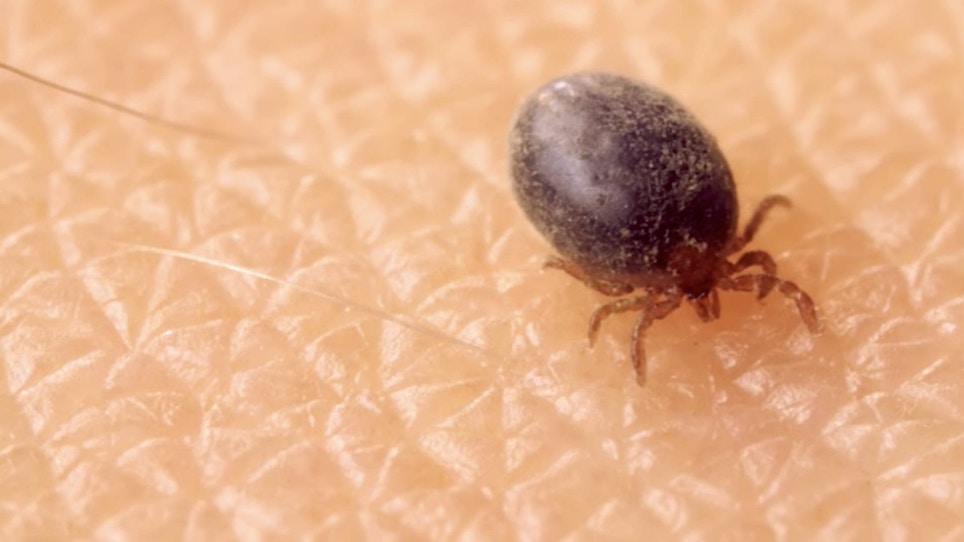Coyotes are like hairy cruise ships for ticks, which enjoy riding along for the buffet and scenery while passing along diseases.
The coyote's head and ears would be the top deck, perfect for a tick to command the best views of the den, pups, woods, pastures and prospective food. After a few days on the Coyote Queen, the ticks have their fill and drop off to spread their disease and nastiness elsewhere.
If you're fortunate enough to knock down some coyotes while hunting, just remember they're likely harboring ticks, fleas and other things. That's one reason I use a Slay Bag to haul out the nasty critters. The bag is tough, easy to use and clean, and is a great investment. If you haven't seen this, definitely check it out.
Ticks are parasites and can pass along diseases you don't want. Here are some of the ones the Centers for Disease Control says ticks can pass to humans.
Anaplasmosis
Severe and life-threatening illness is less common with anaplasmosis compared to other rickettsial diseases, such as Rocky Mountain spotted fever (RMSF) or E. chaffeensis ehrlichiosis. While the case-fatality rate among patients who seek care for the illness is less than 1 percent, predictors of a more severe course include advanced age, immunosuppression, comorbid medical conditions, and delay in diagnosis and treatment.
Where is it found? Anaplasmosis is most frequently reported from the Upper Midwest and northeastern United States in areas that correspond with the known geographic distribution of Lyme disease and other Ixodes scapularis-transmitted diseases.
Babesiosis
Babesia infection can range from asymptomatic to life threatening. Risk factors for severe babesiosis include asplenia, advanced age, and impaired immune function. Severe cases can be associated with marked thrombocytopenia, disseminated intravascular coagulation, hemodynamic instability, acute respiratory distress, renal failure, hepatic compromise, altered mental status, and death.
Where is it found? Babesiosis is most frequently reported from the northeastern and Upper Midwestern United States.
Lyme
Possibly the most commonly known diseease associated with ticks along with Rocky Mountain Spotted Fever. Lyme disease was first identified in Lyme, Conn., and includes symptoms such as a red ring-like expanding rash, and flu-like symptoms including malaise, headache, fever, myalgia and arthralgia.
Where is it found? Lyme disease is most frequently reported from the Upper Midwestern and northeastern United States. Some cases are also reported in northern California, Oregon, and Washington. In 2015, 95 percent of Lyme disease cases were reported from 14 states: Connecticut, Delaware, Maine, Maryland, Massachusetts, Minnesota, New Hampshire, New Jersey, New York, Pennsylvania, Rhode Island, Vermont, Virginia and Wisconsin.
Rocky Mountain Spotted Fever
RMSF is most often transmitted by the American dog tick in the Eastern, Central and Western United States; by the Rocky Mountain wood tick in the Rocky Mountain states; and by the brown dog tick in the Southwestern United States, along the U.S.-Mexico border. RMSF can be rapidly fatal if not treated within the first five days of symptoms. Before tetracycline antibiotics were available, case fatality rates ranged from 20 to 80 percent.
Where is it found? Although RMSF cases have been reported throughout most of the contiguous United States, five states (North Carolina, Oklahoma, Arkansas, Tennessee, and Missouri) account for over 60 percent of RMSF cases. RMSF has become increasingly common in certain areas of Arizona over the last several years; between 2003 and 2016, over 360 cases and 21 fatalities occurred.
Tickbourne Relapsing Fever
Primarily found in western states, Tickbourne Relapsing Fever symptoms may include headache, myalgia, chills, nausea, vomiting, arthralgia and in rare instances some facial palsy.
Where is it found? TBRF occurs most commonly in 14 western states: Arizona, California, Colorado, Idaho, Kansas, Montana, Nevada, New Mexico, Oklahoma, Oregon, Texas, Utah, Washington, and Wyoming. Most cases occur in the summer when people vacation and sleep in rustic cabins. However, TBRF can also occur in the winter months when fires started to warm a cabin activate ticks resting in the walls and woodwork. In Texas, TBRF may be associated with cave exposure.
If You're Bitten
Ticks cling to the edges of leaves, grass and shrubs seeking a host to latch onto. That could be an animal or a human.
Before going into the woods, tuck your pants into boots and hose down with your favorite tick repellent. I've used a bunch of them over the years including Sawyer's (which has 0.5 percent Permethrin), OFF! Deep Woods (which has 25 percent Deet), Repel (40 percent Deet) and straight Deet while on a fishing trip in Canada in 1996.
The Elimitick line of apparel from GameHide is worth your time to consider, too. It's comfortable, well made and helps repel ticks and other insects via an active ingredient bonded to the fabric fibers. It works.
The CDC recommends these steps to remove a tick if you're bitten:
- Use fine-tipped tweezers to grasp the tick as close to the skin’s surface as possible. The key is to remove the tick as soon as possible. Avoid folklore remedies such as using nail polish, petroleum jelly, or heat to make the tick detach from the skin.
- Pull upward with steady, even pressure. Don’t twist or jerk the tick; this can cause the mouth-parts to break off and remain in the skin. If this happens, remove the mouth-parts with clean tweezers. If you are unable to remove the mouth parts easily, leave them alone and let the skin heal.
- After removing the tick, thoroughly clean the bite area and your hands with rubbing alcohol, an iodine scrub, or soap and water.
Whether you're hunting predators, deer, elk, working on your camp, going hiking or doing anything else outdoors, be aware of the risk of ticks. You don't want to become a cruise liner for one of them.






